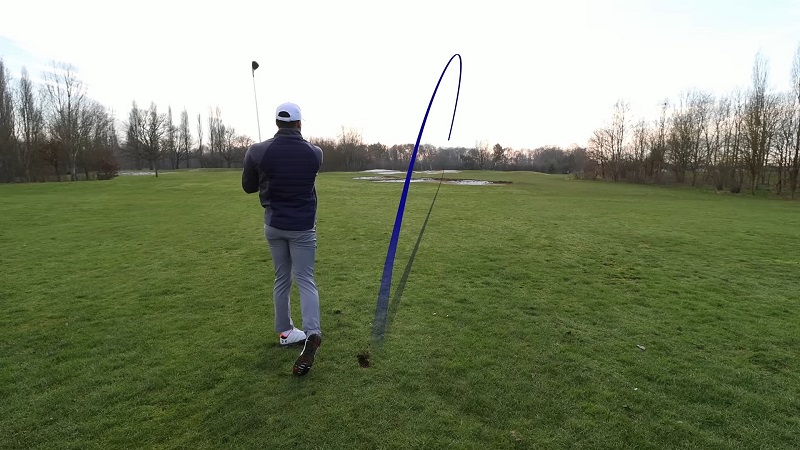Golf is a sport that has captivated audiences for centuries. It combines skill, strategy and competition into one beautiful game. But with so much complexity, it can be hard to understand terms and phrases used by golfers everywhere – like “bogey.” What exactly is a bogey in golf?
Well, in this post, we’ll break it down and explain the meaning of this term more clearly. Keep reading to learn how scores are tracked using Bogeys!
Read more: What is a Birdie in Golf?
What Is A Bogey In Golf?
The term “bogey” can be confusing for those new to golf. In golf, a bogey score is one stroke over par for a hole. So, if a golfer plays a par-4 hole and takes five strokes to complete it, they have scored a bogey. Example: 4 strokes on a par-3 hole, 5 on a par-4 hole, and 6 on a par-5 hole.
While a bogey is not an ideal score, it is better than a double bogey (two strokes over par) or worse. A bogey can happen for various reasons, such as hitting the ball into a bunker or missing a crucial putt.
So, the next time you hear someone say, “I got a bogey on that hole,” you’ll know exactly what they mean.
What Is A Bogey Competition?
A bogey competitor in golf is a golfer who plays against the course in a bogey competition. This is a type of game where the golfer tries to score better than bogey on each hole. Bogey is traditionally defined as one stroke over par, but in a bogey competition, the bogey score may be set higher or lower, depending on the difficulty of the hole and the golfer’s skill level.
The goal of a bogey competition is to improve one’s golf game by consistently scoring better than bogey. This requires golfers to be strategic and disciplined in their approach to each hole. They must also be able to adapt their game to the ever-changing challenges of the course.
The scoring system for a bogey competition is as follows:
- If a player scores a birdie or better on a hole, they win the hole.
- If a player scores a bogey or worse on a hole, they lose the hole.
- If a player scores a par on a hole, the hole is halved.
- The player with the most wins at the end of the competition is the winner.
Bogey competitions are a popular way for golfers of all skill levels to compete against each other. They are also a good way to improve your golf game, as you are constantly trying to beat the course’s bogey score.
Here are some of the benefits of playing in a bogey competition:
- It is a more relaxed and enjoyable format than match play.
- It is a good way to improve your scorecard management skills.
- It can help you to identify the holes where you need to improve your game.
- It is a great way to meet other golfers and make new friends.
- If you are looking for a fun and challenging way to improve your golf game, then a bogey competition is a great option.
What Is The Meaning Of The Term “Bogey”?
Golf has a long and storied history, with many unique terms and concepts associated with the sport. One such term is ‘bogey’, originally referring to a score that a skilled golfer would attempt to achieve on a particular hole. This score was distinct from a ‘par’, representing the perfect score for that hole.
Interestingly, the term ‘bogey’ was not originally used for this concept – instead, it was known as the ‘ground score’. The term ‘bogey’ was widely used only later, particularly in the UK. For those interested in golf, understanding the origins of these terms can add depth and meaning to the game.
The Different Types Of Bogey In Golf

There are types of bogeys:
Double Bogey – This is the highest score a golfer can get without going over par. It indicates two strokes over the number of strokes needed to complete a hole or two over par.
Triple Bogey – A triple bogey indicates three strokes over the number of strokes needed to complete a hole or three over par.
Quadruple Bogey – A quadruple bogey indicates four strokes over the number of strokes needed to complete a hole or four over par.
Is Bogey Scoring Good or Bad?
Some players consider it a failure and try to avoid it at all costs, while others see it as a natural part of the game. But is bogey scoring good or bad? Well, it depends on your goals and expectations as a golfer.
For the average golfer, a bogey score is a commendable achievement. It means that they have only taken one extra stroke than what is expected on a particular hole, and that is definitely something to be proud of. It also indicates that they are performing better than the average player out there.
However, for the more skilled and experienced golfers, a bogey score is not something to aspire to. They will often aim to score much lower than that on each hole as they push themselves to improve their game even further.
Whether bogey scoring is good or bad depends on the challenge you want to tackle and the personal satisfaction you derive from your golf game.
Bogeys of Average Golfers
For the average golfer with a handicap of 16-20, maintaining a consistent score can be quite the challenge. According to recent statistics, players at this level averaged 7.3 bogeys, 4.7 double bogeys, and 2.1 triple bogeys or worse per 18-hole round. On the bright side, they also managed 3.6 pars and 0.3 birdies or better on average. Unfortunately, eagles are practically nonexistent at this level.
For golfers in the 21-25 handicap range, the numbers look even more daunting. Averaging 8.9 double bogeys or worse, these players struggle to score better than a bogey on almost half their holes. However, with plenty of room for improvement, there’s always hope for progress on the course.
The Consequences Of Making Too Many Bogeys While Playing Golf

What happens when you make too many bogeys? The consequences can be frustrating and even detrimental to your overall score. It’s said that bogeys are the most common score for amateur golfers, but if you consistently make too many, it can lead to a high score and a disappointing round.
Additionally, making too many bogeys can negatively impact a golfer’s mental game, leading to frustration and even loss of confidence. It’s important to stay focused, adjust, and improve your game to avoid the consequences of too many bogeys.
Do Pro Golfers Make Bogeys?
Even the most skilled golfers in the world are bound to make mistakes, and the statistics prove it.
According to the PGA, in 2019, the top golfers in the TOUR Championship averaged 2.62 bogeys per round. However, Rory McIlroy, widely considered one of the best golfers in the world, managed to have the fewest bogeys per round. That said, even he is not immune to a bad day on the course.
In the 2019 Open Championship, McIlroy struggled from the start, beginning his round with a quadruple bogey and finishing with a triple bogey.
It’s a reminder that, in golf, anything can happen on any given day.
Tips For Avoiding A Bogey During Your Next Game Of Golf
When it comes to avoiding a bogey during your next game of golf, there are a few key tips that can help you achieve success:
Warm up properly: It is important to warm up your body before playing a round of golf, as this will help to prevent injury and improve your performance.
Focus on technique: Spend time practicing your swing technique to develop muscle memory for each shot, which should help you avoid bogeys in the long run.
Remain patient: Don’t rush through shots, as this can lead to poor form and result in more bogeys. Stay calm and focused during the game.
Take lessons: If you still need help with your form or technique, consider taking golf lessons from a professional instructor who can help you to improve your skills.
Practice regularly: Make sure you are regularly practicing to keep your skills sharp and reduce the number of bogeys you make when playing.
Conclusion
While bogeys have a fairly straightforward definition, they can be relevant to many areas of golf. Understanding the definition and meaning of a bogey can help golfers make smart decisions in various playing situations. Furthermore, knowledge of this term may help maintain an accurate scorecard and play a game with focused intensity.
Lastly, by being aware of when bogeys occur and why, players – regardless of their amateur or pro level – can learn more about their strengths and weaknesses and develop a greater appreciation for the complexity underlying this beloved sport.
That said, it’s never too late to refine one’s golf jargon; understanding what “bogey” means is essential for any successful round out on the course!
FAQs
Is A Bogey Score Considered Good?
A bogey score is considered a good score for an average golfer. It is one stroke over par on a hole and indicates that the player has performed better than average. However, a good golfer will usually aim to score much lower than a bogey score on each hole.
Is Bogey Worse Than Par?
A bogey score is considered worse than par because it indicates that a player has scored one stroke over the expected amount on that particular hole. Par is the set amount of strokes that a skilled golfer should be expected to complete a hole in, so any score that is higher than par indicates that the golfer was not able to complete the hole in the expected number of strokes. It is important to note, however, that bogey scores are still considered good scores for the average golfer.
What Score is Worse Than Bogey?
These include Double Bogey (two over par), Triple Bogey (three over par), and even Quadruple Bogey (four over par). Of course, there are also scores that are better than Bogey, such as Birdie (one under par) or Eagle (two under par), but it’s important to know the less desirable scores as well in order to gauge your progress and improve your game.
What Is The Difference Between A Bogey And A Double Bogey?
A bogey is one over par for a particular hole, while a double bogey is a two-over par. Making a double bogey can be considered significantly worse than making a bogey.
What Is The Average Bogey Score?
The average bogey score will depend on the type of course and the player’s skill level. Generally, an average golfer should expect to shoot in the range of one to three strokes over par on each hole. Therefore, a bogey score or better will typically be considered a good score for an average golfer. A skilled golfer, however, should expect to shoot scores much lower than bogey on each hole.


